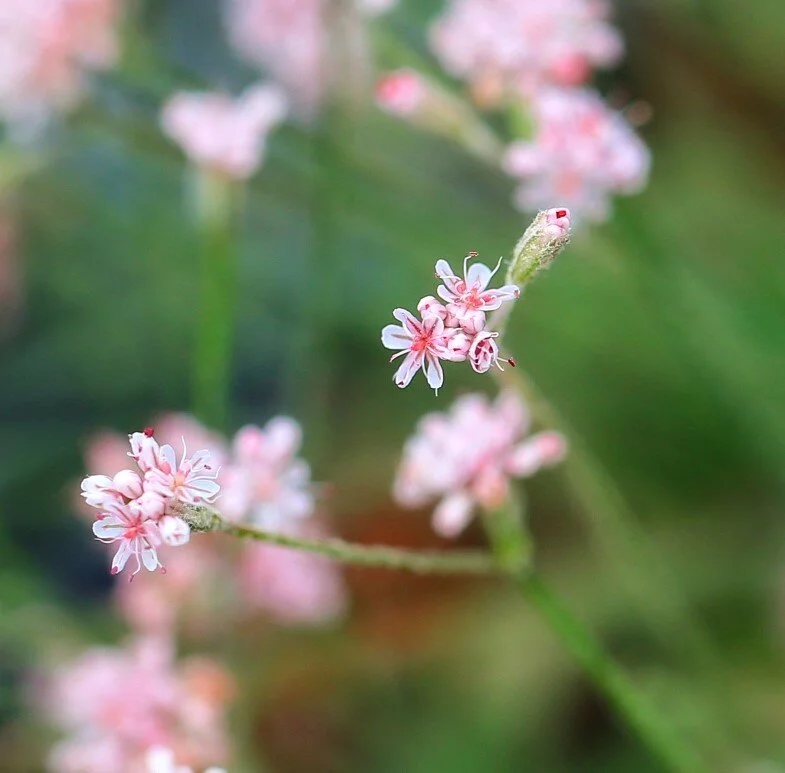Photo by Lech Naumovich licensed under CC BY-NC-SA 2.0
De-extinction is an exciting premise. Whereas the topic largely rests in the minds of hopeful scientists and Jurassic Park dreamers, occasionally a species is brought out of the extinction bin and ushered back into reality. This is a rare occurrence indeed but one worth celebrating. We don't get many second chances after all. The recent rediscovery of a small species of buckwheat affectionately called the Mount Diablo buckwheat (Eriogonum truncatum), offers us one such second chance.
Discovered in 1862 on Mount Diablo, a rugged peak located just east of San Francisco, this tiny annual wouldn't readily catch the eye of most passers by. Despite its size, the Mount Diablo buckwheat is quite unique as it is endemic to this single mountain. Despite its special status, this tiny little plant was declared extinct in 1936. The cause of this extinction was the introduction of non-native grasses that now carpet the open areas that once fostered this delicate little plant.
Everything changed for the Mount Diablo buckwheat in 2005. A graduate student working on a floristic survey of this region found something suspicious. He didn't believe it at first but further investigation revealed that he had rediscovered the Mount Diablo buckwheat. It was a small population, numbering only about 20 plants. Seeds were collected and cultivated from this single remaining population. Attempts to restore viable populations of the Mount Diablo buckwheat were meager at best. Only a small handful of plants established themselves. Still, at that time it seemed that this species was saved from extinction, albeit only marginally.
The situation drastically changed for the Mount Diablo buckwheat in May of 2016. Two botanists spotted a patch of plants giving off a pink hue. Closer inspection and lots of deliberation revealed this to be the largest population of Mount Diablo buckwheat in existence. Estimated at nearly 1.8 million individuals, this population spans nearly half an acre. Somehow they managed to escape being choked out by invasive grasses. This find is an astronomical boost for a species thought to be extinct for nearly 70 years. Again, floral surveys were to thank.
So, the question remains, how did this plant go undetected for all those years? I don't think there is a simple answer to this but a lot of it probably has to do with its lifestyle. Annuals can be tricky. We often think of them as hardy plants that boom and bust in a single season. In reality, annuals can be quite sensitive. Instead of toughing out harsh years like perennials do, annuals sit in wait as seeds until more favorable conditions come along. They can wait months, years, or even decades. It could be that the Mount Diablo buckwheat existed as a dormant seed bank for much of that time. Another factor could be its appearance. It is not a large plant by any means. Also, by the standards of your average botanizer, its definite not "knock your socks off showy." Unless you knew what you were looking for you might easily pass it over.
Regardless of what it has been doing all this time, it is a wonderful thing that more plants have been found. It is by no means out of the woods as far as extinctions go but this is a major step forward in assuring that this species will be around for our children's children to enjoy. Threats still loom. Invasive plants are always a concern and the very fact that it is extremely rare opens it up to a lot of unwanted attention by hikers and botanizers alike. It would be all too easy to love this species to death.
The story of the Mount Diablo buckwheat does something else for conservation. It highlights the importance of continued floristic surveys. Often scoffed at by academics and scientific journals alike, floristic surveys are far from the antiquated exercises some folks make them out to be. They serve a very important purpose. Without floristic surveys, this little buckwheat may have teetered off into oblivion without anyone ever noticing.
Further Reading:
